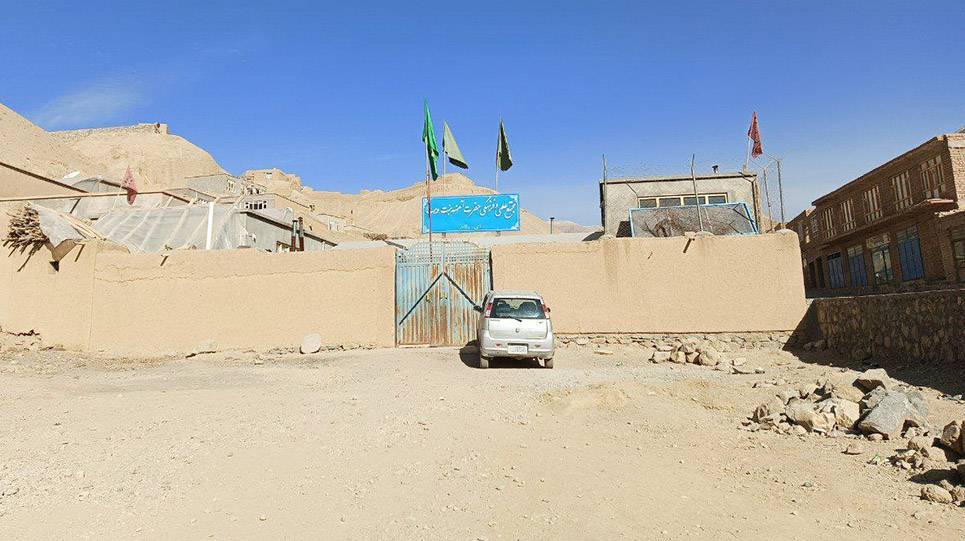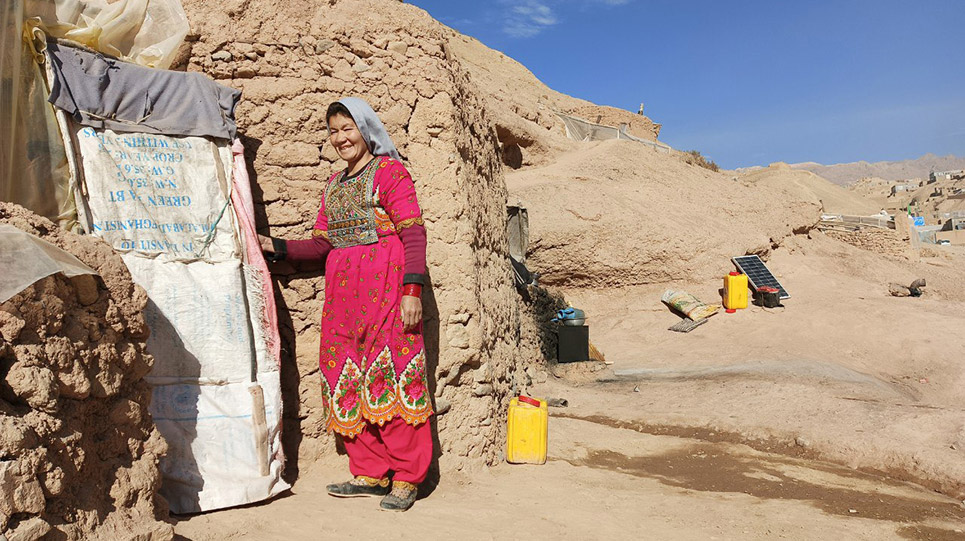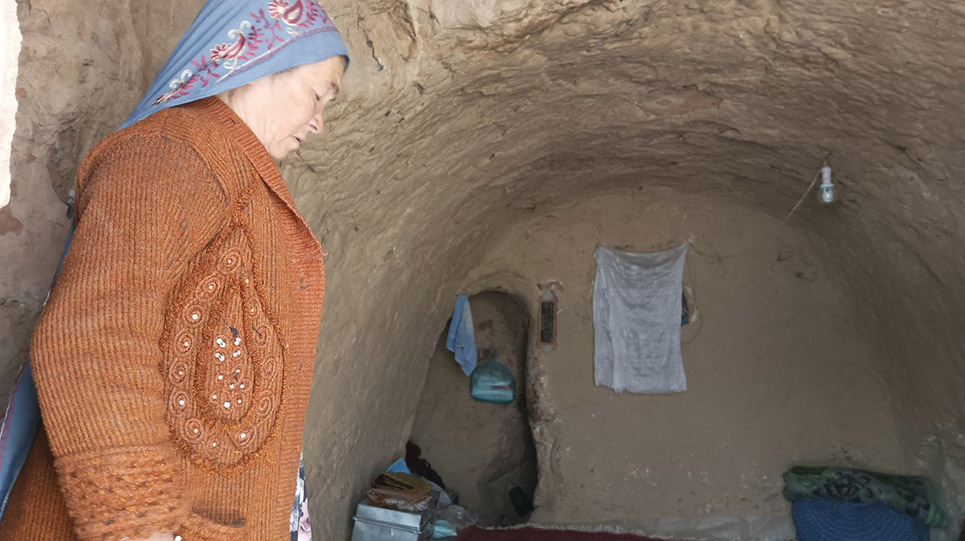
A Religious school for girls in Bamyan. (Photo: RAWA)
With the return of the oppressive Taliban regime, the dark and bloody history of our land has reverted, reopening the unhealed wounds of our people, particularly from the initial period of the current medieval group's rule. In both eras of their barbaric governance, the people of this stricken land have borne witness to the most heinous crimes.
Bamyan stands as a living testament to the atrocities committed by these malevolent individuals, a legacy that our people will never forget. Despite their silence born from a sense of helplessness, the scars of destruction remain apparent even after two decades. The massacres in Yakavalang and Bamyan city, along with the bloodshed in Sar Asiyab and other areas (which the Taliban have orchestrated and continue to perpetrate), are a stark reminder of their bloodthirsty nature.
The heart of Bamyan is a city that the corrupt government of Karzai-Ghani-Abdullah has shamefully neglected, leaving its inhabitants to survive without most basic amenities. Many homes within the city are constructed from mud, while others live in cold, damp caves just steps away from the city center. Despite these dire circumstances, the people of Bamyan have not forsaken their pursuit of education, transforming it into a city where boys and girls attend school together. Women from distant regions and impoverished backgrounds flocked to the city to engage in academic pursuits, attending schools, various courses, and universities.
Girls took up activities like cycling, skiing, martial arts, and other sports; the majority of students in science and language education centers were women and girls. However, today, these symbols of civilization in Bamyan seem to have vanished. Instead, we see a large number of women and girls covered from head to toe in those black veils that is mostly promoted by pro Iran "Velayat-E-Faqih" (Guardianship of Islamic Jurist) and Taliban mentality, walk towards religious schools -centers for training more Taliban and Mullah.
The Taliban, akin to other fascist and fundamentalist entities, seek to impose a regressive and medieval culture upon our society, as they are sure that their backward ideologies will only thrive in an environment of ignorance. One of the Taliban's destructive strategies involves proliferating religious schools across Afghanistan. In Bamyan province, these extremists are actively targeting educated and progressive individuals, aiming to eradicate the region's forward-thinking culture by trapping them into what can be described as "Taliban producing factories". Due to rising poverty, unemployment, and the closure of educational institutions, this group has made some headway in achieving its nefarious objectives. The repressive regime of Iran –these brother in-dreed of Taliban, has also lent support to these efforts.
Throughout Bamyan, residential buildings have been repurposed into religious schools for young boys and girls. For instance, on May 8, 2023, Mullah Abdullah Sarhadhi, a key figure in the destruction of Bamyan's ancient statues and both current and former Taliban governor in Bamyan, laid the foundation for a school named "Zinabiyah" in the village of Waras district.
The parasitic Iranian regime and the Taliban exploit the dire economic circumstances faced by our people, coercing individuals to enroll in these centers. Many of these centers of ignorance receive financial backing from the Iranian government, offering a monthly stipend to entice girls above the sixth grade into their indoctrination schemes.

Samia (a pseudonym), student in a religious schools in Bamyan. (Photo: RAWA)
Samia (a pseudonym), a student at one of these schools in Bamyan, shares her experience: "My husband lost his job with the change in government, leaving us struggling to support our seven children, including two daughters in grades 10 and 11 when schools shut down. Seeing my daughters disappointed at home due to both the lack of schooling and our financial hardships, I learned about a nearby school offering 3,000 Afghanis (around US$ 40) per month for girls above the sixth grade. This seemed like a lifeline for us, as enrolling my daughters meant an additional 6,000 Afghanis monthly to sustain our family. Without much deliberation, I sent them to this school."
Numerous other families have similar thoughts, recounting that these schools primarily focus on teaching Shia jurisprudence while emphasizing strict gender roles mandating female family members within the limit themselves to the household and unwavering obedience of their husbands.
In the past, women in Bamyan were able to contribute to their families' finances through various jobs. However, the current situation in Bamyan has worsened dramatically, with poverty escalating. As winter sets in with its harsh cold, many families are left with no choice but to resort to begging for survival. A visit to the living quarters of the cave-dwelling people of Bamyan paints a stark picture of how religious schools have managed to make inroads among women and girls. Here are a few poignant examples:
Zahra (pseudonym), a resident of a cave, shares that her husband's main income comes from selling scrap metal, amounting to only 20 Afghanis (US$ 0.28) a day. With tears in her eyes, Zahra expresses the hardships they face living in a cave, especially during the long and snowing winters. She describes their living conditions similar to living in a dark cemetery, filled with fear and cold. Their damp and chilly caves, coupled with hunger, create a dire situation where they fear for their children's lives. Some days, they go without food, and the little money her husband brings home barely feeds their two children.

Halima is a woman who lives in a cave in Bamiyan province (Photo: RAWA)
Haleema (pseudonym), another cave resident, narrates the struggles of her weak father, who must undertake difficult work despite his old age. She describes how he has to walk for hours to skin trees in a distant area, where his employer exploits him by making him work more then what is paid. Despite his trembling hands and exhaustion, he returns home late at night with half of money he should have received. Haleema's father's journey is an example of the harsh realities faced by the underprivileged people of Bamyan.
A young woman, aged only 21 who seems much older than her age due to hardship of live and poverty, reveals the challenges she faces as the eldest of seven sisters, with an elderly ill mother and the loss of their father a few years ago. She spins wool from early morning until late at night, earning a meager 2,000 Afghanis (lees than 30 US$) per month. Their condition is to mere survival, living only on dry bread and water while enduring the cold of their cave dwelling without even a carpet for comfort…



